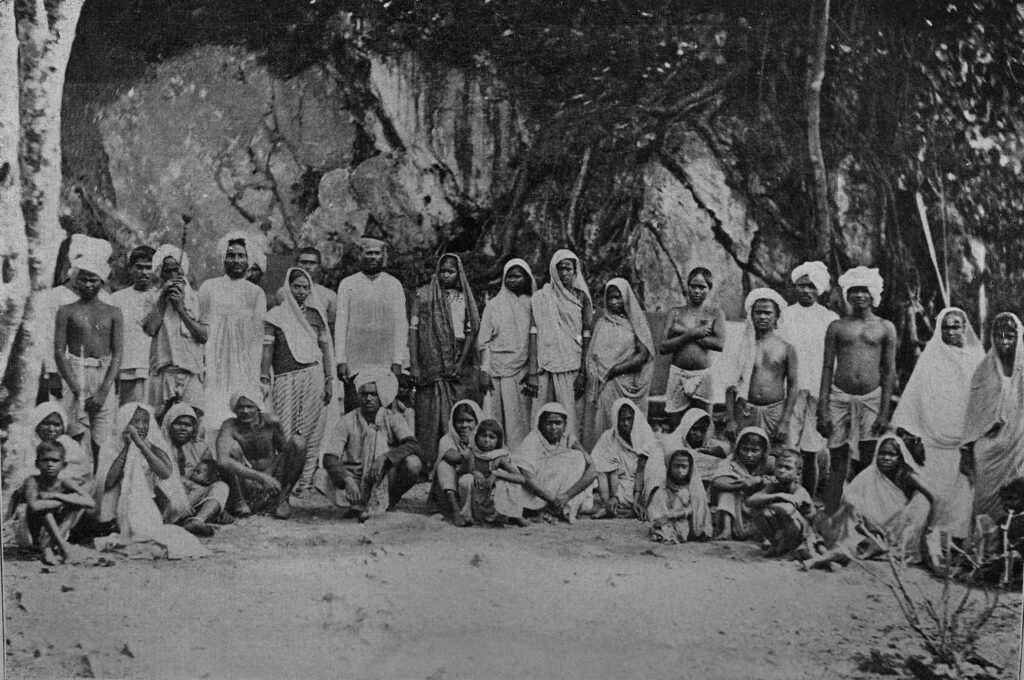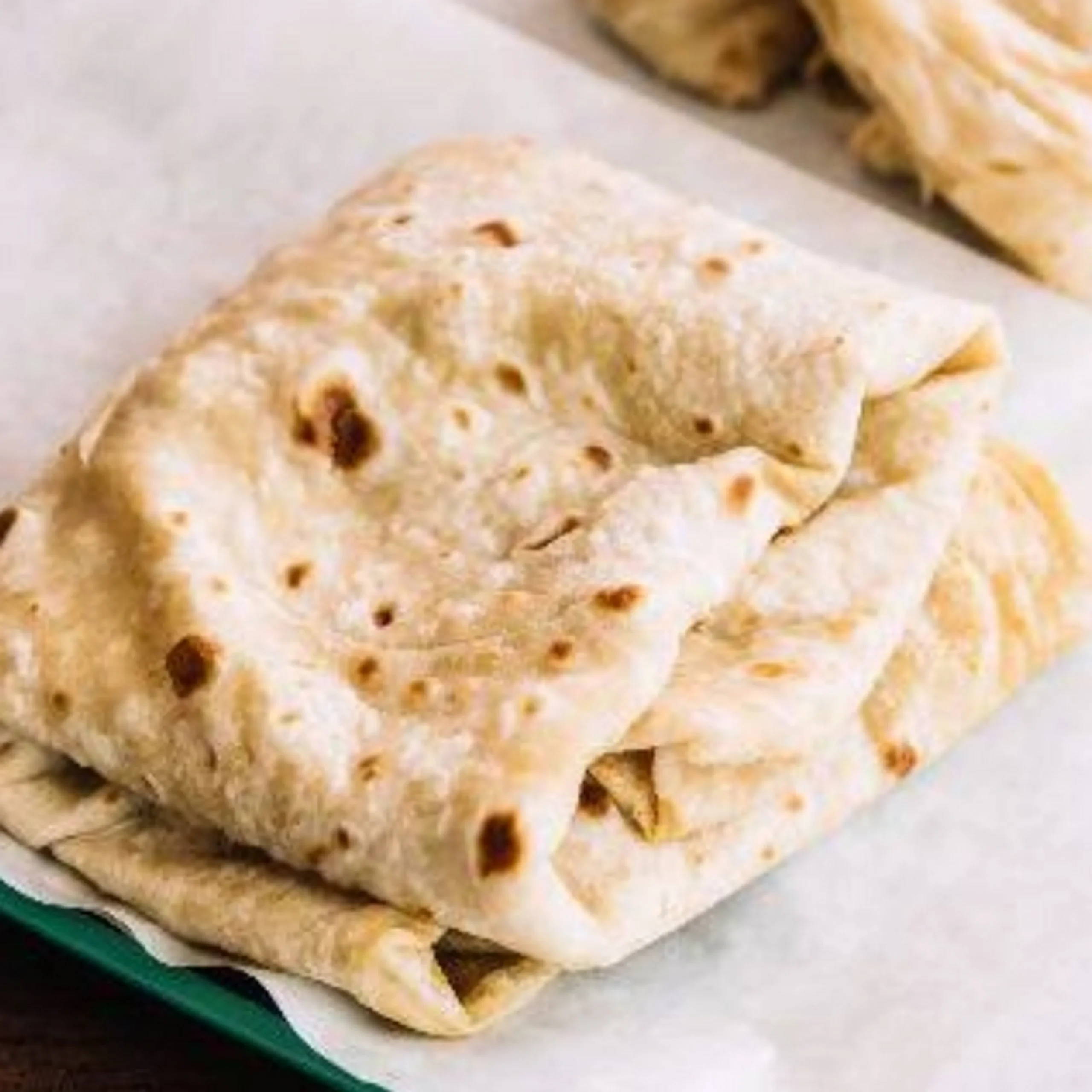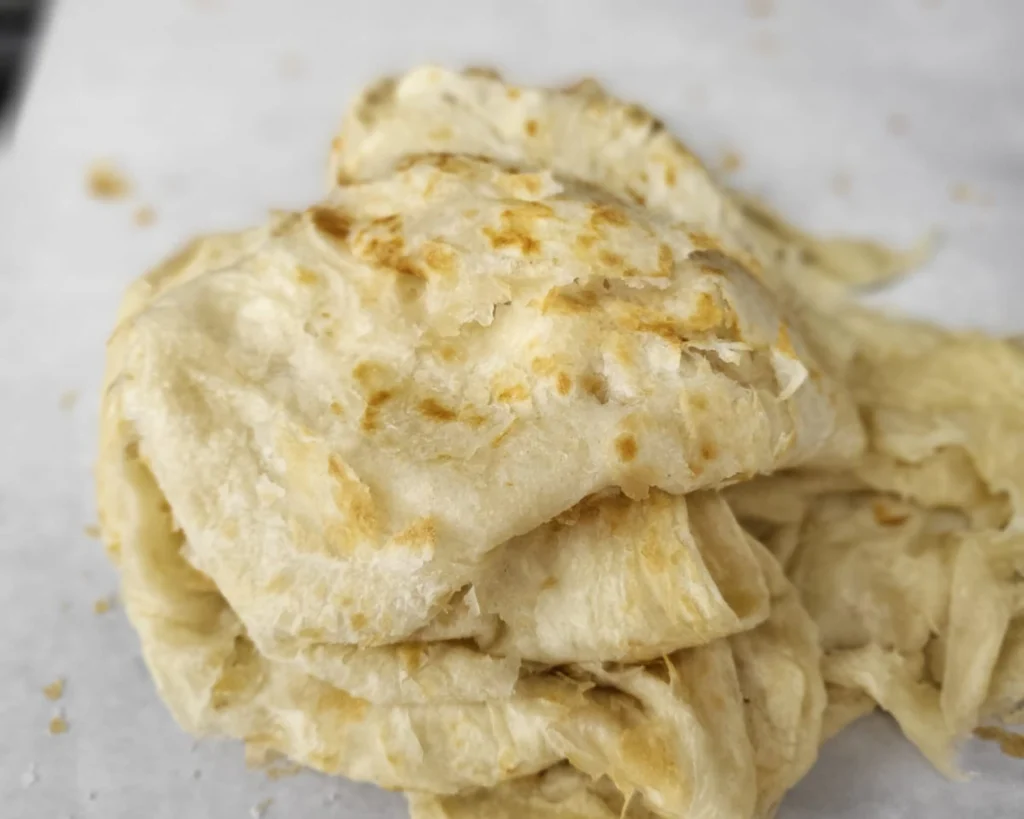Roti, a staple in Indian and Trinidadian cuisine, has taken on distinct regional characteristics, reflecting their unique histories and culinary influences.
How Did Roti Arrive in Trinidad?
Trinidadian roti originated from Indian roti, brought to the Caribbean by Indian indentured laborers in the 19th century. Over time, the roti in Trinidad and Tobago evolved to incorporate local ingredients and flavors, creating a unique culinary tradition.

Types of Trinidadian Roti
Dhal Puri
A soft roti stuffed with seasoned split peas, adding a rich, earthy flavor. It’s a popular choice for roti wraps.

Paratha Roti
Known for its flaky, layered texture, it is achieved by brushing the dough with oil and “clapping” it during cooking.

Sada Roti
A thicker, simpler flatbread, often eaten with vegetables or butter, similar to a dinner roll.
Aloo Roti
Stuffed with spiced mashed potatoes, providing a hearty, savory taste.
Trinidadian roti vs Traditional indian roti
- Ingredients: While Indian roti primarily uses wheat flour, Trinidadian roti may include fillings like dhal or potatoes, reflecting local preferences.
- Preparation Techniques: Trinidadian roti, especially paratha, involves unique techniques like clapping to create its signature flakiness.
- Usage: In Trinidad, roti is used to wrap curries and other fillings, creating a portable meal, whereas in India, roti is typically a side dish.
Why roti is an important part of Trinidadian culture
In Trinidad and Tobago, roti is more than just food; it’s a cultural symbol, representing the fusion of Indian and Caribbean culinary traditions. It’s a beloved street food and a staple in many households, showcasing the adaptability and creativity of Trinidadian cuisine.
With its diverse types and unique preparation methods, Trinidadian roti illustrates how culinary traditions can adapt and thrive in new environments, creating something entirely new yet rooted in its origins.
This evolution from Indian roti to a distinctly Caribbean variant underscores the rich, multicultural tapestry of Trinidad and Tobago’s food culture.
